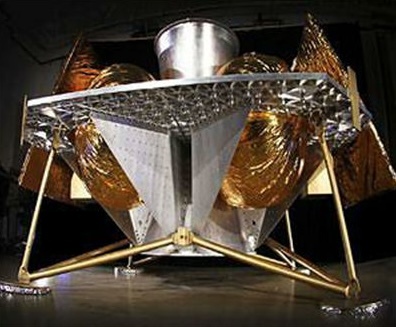27.10.2025

Astrobotic's Griffin-1 lunar lander is advancing toward its mission to deliver a diverse suite of payloads - including Astrolab's FLIP rover, the Astrobotic CubeRover, and several secondary instruments - to the surface of the Moon. The mission features a propulsion system built around four Composite Overwrapped Pressure Vessel (COPV) tanks that are designed to withstand high pressure, supporting final integration as the lander completes preparation for environmental testing to ensure robust performance during launch and lunar operations.
The lander's avionics, engineered and built in-house, have now been assembled and cleared for flight. These critical systems manage on-board control and telemetry, enabling streamlined system integration and mitigating risks by supporting rapid developmental cycles. Accompanying the avionics, the LunaRay software suite is being used in a closed-loop simulation to support autonomous landing procedures in GPS-denied environments, processing real-time imagery and 3D surface data to validate navigation and hazard avoidance technology.
Astrolab's FLIP rover is undergoing rigorous developmental testing, including thermal vacuum trials and functional checks of the core systems. The mission will demonstrate next-generation capabilities in lunar mobility, telerobotic operation, and environmental resilience. Astrolab is focusing on payload integration, communications, power, and the execution of several investigative experiments on mobility, guidance, perception, and lunar dust.
The BEACON project - a collaboration between Astrobotic and Mission Control - has completed end-to-end simulations by operating CubeRover hardware on Flatsat and confirming communication and integration with the lander's systems. All secondary payloads are in the final stage of checkout and software verification.
Additional projects aboard Griffin-1 include a commemorative plaque from Nippon Travel Agency, messages from children in Japan, and the Galactic Library to Preserve Humanity (GLPH) by Nanofiche. The MoonBox capsule, containing symbolic items from around the world, is also undergoing final integration.
Structural integration of the lander continues to progress, with major components such as pressurant tanks, ramps, thrusters, and solar panels all successfully fit checked. The propulsion, tubing, cabling, and harnessing have been primarily produced in-house, and the final stages of harnessing integration are near completion.
With engine qualification tests ongoing and key systems ready, Griffin-1 is moving closer to launch. The team is targeting the next available launch window in July 2026, aiming to demonstrate precision landing and contribute to the advancement of sustainable lunar infrastructure.
Quelle: SD
